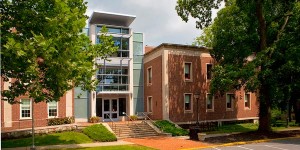This project is relevant to contemporary academia because sports has seen a rapid increase in the use of engineering technologies and there has also been an up rise of sports engineering research and training. More specifically, sports engineering programs have been implemented at many prestigious schools across America. Some of these programs have the ability to work hand in hand with major sporting companies. For example, Oregon and Nike, Maryland and Under Armor, and Georgia and EvoShield. This program proposal is not impossible for such a small engineering school like Lafayette College since Majestic Athletic is located only 5.4 miles away. Sports engineering is becoming more and more prevalent in all athletics and does not seem to be slowing down, therefore it makes sense to teach engineering students the discipline of sports engineering
Currently, Lafayette offers courses in both Sports Economics and the Sociology of Sports – Econ 338: Economics of Sports and A&S 265: Sociology of Sport respectively. Our community is both heavily populated in engineering and in athletics. One in four Lafayette students are engineering majors according to USNews and one in every five Lafayette students play a varsity athlete according to Forbes. Based on this information, joining the two seems logical. It is almost hard to believe that our proposed course is not already in place at Lafayette especially since the Forbes statistic did not include the vast number of students who participate in intramural or club sports. Our encompassing goal of this Sports Engineering Capstone Project is to integrate engineering and athletics because there has been an increase in sports participation over the last four decades especially amongst adolescents.
In soccer, which remains one of the country’s most popular youth sports, numbers have risen from about 15 million participants in 1987 to more than 17.5 million participants in 2002, according to CNN. In Pop Warner Football, a youth football organization , participation increased two hundred percent from 1990 to 2006, from about 130 thousand players to 260 thousand players, according to the same CNN article. This means the demand for sports engineers is only going to increase as sports become more prevalent assuming that the study done by CNN foreshadows decades to come. Our idea is to draw students toward the Engineering Studies Major which will touch on the expanding sports engineering field to fully experience what it means to be an Engineer at a Liberal Arts College.


